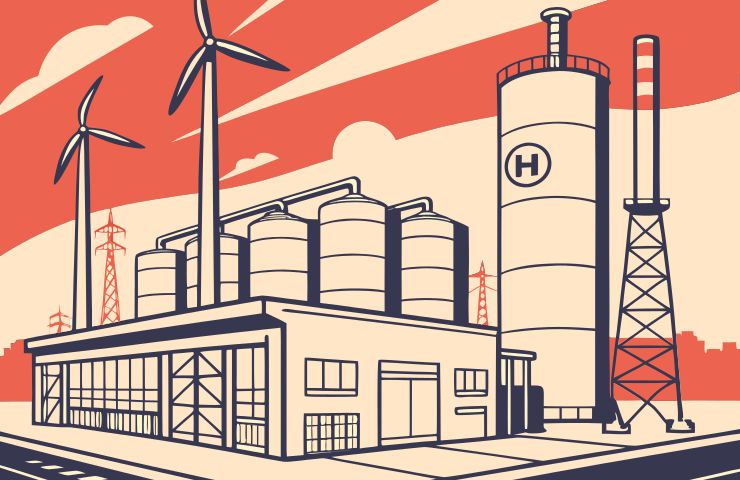
Uniper and thyssenkrupp Uhde partner to build six ammonia cracking plants in Germany
November 26, 2025Picture this: in the heart of Germany’s Ruhr region, the old industrial quarter of Gelsenkirchen-Scholven—once a poster child for coal-powered steel mills—has turned into a live lab for clean energy innovation. Meanwhile, a few hundred kilometers north, the windswept docks of Wilhelmshaven on the North Sea are swapping barrels of oil for cargos of green fuel. With the EU hot on the trail of climate neutrality, ammonia cracking has grabbed the spotlight, and Germany’s leading the charge.
Historical Foundations: Cracking the Code
For years, ammonia’s been the go-to carrier for shipping hydrogen—it’s easy to liquefy and load onto tankers—but cracking it back into pure gas at industrial scales? That was a pipe dream until thyssenkrupp Uhde engineers stepped in. They experimented with next-level metal catalysts and redesigned reactors to hit conversion rates north of 90%. After logging thousands of hours refining the process, they unveiled a 28-ton-per-day demo plant in Gelsenkirchen-Scholven, proving once and for all that ammonia cracking isn’t sci-fi—it’s here.
From Coal to Clean: Germany’s Energy Evolution
Gelsenkirchen-Scholven has about 262,000 residents and an average per-capita rent of $12,000. Its identity used to be wrapped up in coal and steel; now, those same pipelines, power lines, and skilled workers are shifting gears toward green projects. The star of the show is the demo unit at Uniper’s power station, funded by the Ministry of Economic Affairs, Industry, Climate Action and Energy of North Rhine-Westphalia. It’s a real-world testament to how regional backing and industrial know-how can drive breakthroughs in hydrogen production and decarbonization.
A Partnership Leading the Charge
Back on 26 November 2025, Uniper and thyssenkrupp Uhde shook hands on a framework deal to roll out up to six commercial ammonia cracking hubs across Germany. Together, they’ll process up to 7,200 tonnes of ammonia per day, turning incoming shipments into hydrogen for heavy hitters like steel mills, refineries, and chemical plants. It’s the perfect mash-up of Uniper’s market operations and thyssenkrupp Uhde’s engineering flair.
The rollout’s phased to perfection: first, the Gelsenkirchen demo ramps up, while detailed engineering and site prep kick off in Wilhelmshaven. There, modular reactor skids and buffer tanks will nestle beside Uniper’s hydrogen import terminal, primed for full-on commercial volumes. Digital control systems will weave all the plants together, giving operators real-time insights and the flexibility to ride demand waves.
How Ammonia Cracking Works
The process is more straightforward than it sounds. Liquid ammonia (NH3) arrives under moderate pressure, gets vaporized and purified to strip out impurities, and then meets a high-temperature reactor packed with a custom catalyst. Inside, the NH3 molecules break apart into nitrogen (N2) and hydrogen (H2). Next up, pressure-swing adsorption kicks in to polish the hydrogen to about 99.9% purity, making it ideal for industrial use. The leftover nitrogen? Harmless, and it can either head to fertilizer production or be released safely into the air.
What seals the deal on efficiency is heat recovery: most of the reactor’s excess warmth gets recycled back into the system, trimming operating costs and boosting overall energy performance. That energy-savvy trick is what makes a solid return possible on this emerging tech.
Scaling Up: From Demo to Commercial
Spinning one demo into six full-scale facilities is no small feat. Uniper’s infrastructure crews tackle civil works, storage tank design, and safety systems, while thyssenkrupp Uhde supplies reactor modules, catalysts, and process controls. They’re coordinating closely with port authorities in Wilhelmshaven to nail down smooth ammonia deliveries and zero-emission cargo handling. At every turn, regulators and local stakeholders are in the loop to meet strict safety and environmental guidelines.
Meanwhile, Uniper’s market operations group is already mapping how this fresh hydrogen supply will plug into Europe’s energy markets. From balancing grid requirements to locking in long-term supply deals, they’re making sure that when the valves open, hydrogen production flows seamlessly to where it’s needed most.
Impact on Europe’s Energy Security
Europe’s heavy industries are staring down a hydrogen shortfall—domestic electrolyzers alone can’t cut it. That’s where imported hydrogen steps in. By leveraging ammonia cracking, Germany’s plants will diversify supply sources, letting hydrogen flow in from sun-soaked solar farms in North Africa or wind parks in Scandinavia straight to European factory floors. It’s a powerful hedge against price swings and geopolitical hiccups.
Plus, this network lays the groundwork for cross-border hydrogen pipelines and trading hubs. Once all six plants are up and running, we’re looking at thousands of tonnes of hydrogen per day, powering everything from steel furnaces to chemical facilities and nudging Europe closer to its net-zero goals.
A Glimpse into the Future
Picture a Europe where hydrogen production flows as smoothly as natural gas—fueling steelworks in Duisburg, refineries in Rotterdam, and chemical hubs in Antwerp—all powered by ammonia shipped from the other side of the planet. That’s the vision Uniper and thyssenkrupp Uhde are bringing to life, one cracking reactor at a time. It’s a sneak peek at an agile, clean, and resilient energy landscape.
And here’s the kicker: industrial-scale use of hydrogen derived from ammonia will be a huge win for decarbonization—not just for Germany, but for the whole of Europe. This isn’t a should-do someday plan; it’s unfolding right now. So here’s to bold ideas, killer partnerships, and a greener tomorrow. With ammonia cracking, the next chapter in Europe’s energy story is already being written.


 With over 15 years of reporting hydrogen news, we are your premier source for the latest updates and insights in hydrogen and renewable energy.
With over 15 years of reporting hydrogen news, we are your premier source for the latest updates and insights in hydrogen and renewable energy.